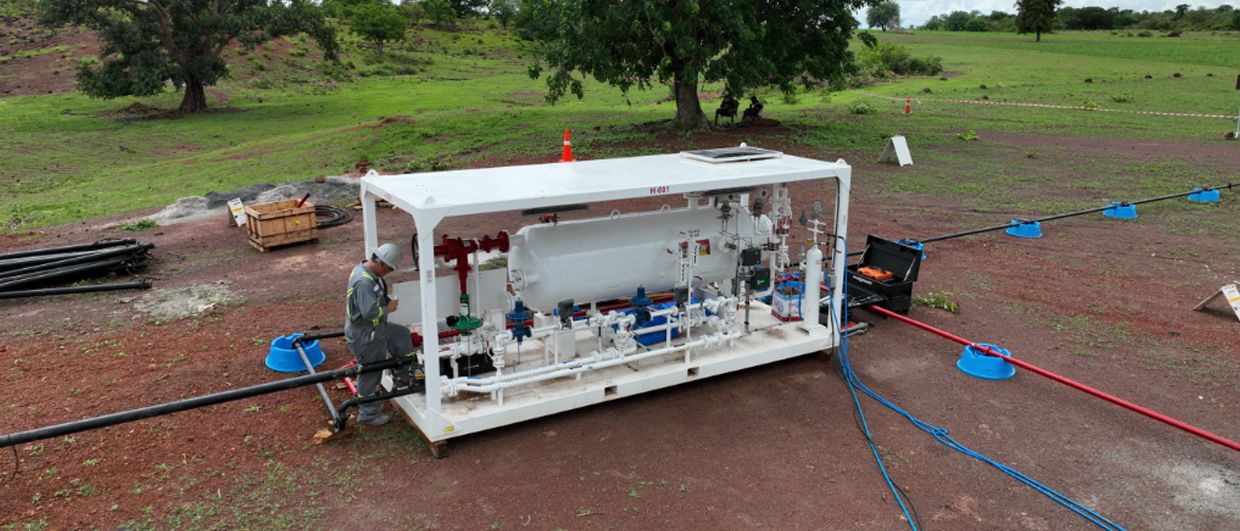The conference opened strongly with a keynote by Viacheslav Zgonnik from HyReveal, tackling this question. His market research shows that the number of companies exploring for natural hydrogen is rapidly increasing and currently sits at around 110. Mining companies entered the scene en masse in 2024 and took over the number of oil and gas companies in 2025.
Natural Hydrogen is well suited to mining companies since gas and ore are often found in the same geological setting. Mining companies have huge energy needs and are often positioned in remote locations, so a local and cheap energy source, even if reserves are small, is a good match.
In other words, it was fitting that the next presentation was by Max Power Mining Corp about the well they are currently drilling in Saskatchewan, Canada, and the huge hydrogen potential the province has as a whole.
Several operator presentations and break time discussions later, it became clear that hopes of finding a free gas hydrogen reservoir are dwindling. Consensus is growing that the best definition of a hydrogen reservoir is likely an aquifer with dissolved gas.
As Jürgen Grötsch from Tellus Energy Solutions put it: “Exploration is not the challenge anymore, but production is.” The Kairos project Tellus Energy Solutions is working on plans to co-extract heat, hydrogen and possibly helium from a low-temperature geothermal aquifer in Bavaria, Germany.
Jacques Pironon from CNRS discussed options to produce hydrogen in Lorraine, France. The aquifer can be produced as a whole, but this results in large volumes of water needing to be managed. Hence, the Regalor II project is looking into developing membrane technology to separate H2 from water at reservoir depth. Thanks to the pressure differential, no energy is needed to get the gas to surface.
The conference continued with a host of technical presentations on topics such as hydrogen source rocks, migration pathways, basin modeling, analytical techniques and artificial hydrogen generation during soil sampling and drilling.
The summit finished on a high, on the topic of stimulated geological hydrogen. Alexis Templeton, Professor at the University of Colorado, showed a video of the Rock-Hydrogen project pilot well in Oman. Peridotite at 1 km depth had been injected with water and the well shut in for 14 months. When the taps were opened, the well continuously burped large volumes of hydrogen, a result that exceeded even Alexis’ own expectations.
My takeaway from the conference is that natural hydrogen can play a small part in the energy transition. Especially in remote locations, to power mining operations or off grid villages in developing countries. The big question is, will exploration companies be able to continue attracting investors now that the chances of finding large, high-pressure, free gas reservoirs are dwindling? If not, that will be the end of the start-up exploration companies, with mining companies financing their private projects as the only ones remaining.





